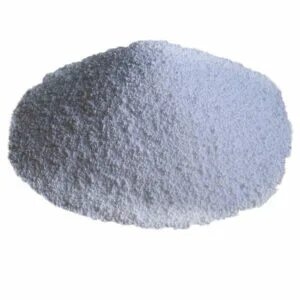Nonylphenol Ethoxylate Market Is Explore Significant Growth: 2023-2030Posted by Pearl Smith on May 24th, 2023  Nonylphenol ethoxylate (NPE) is a group of chemicals that belong to the family of nonionic surfactants. NPEs are produced by ethoxylation of nonylphenol, which is derived from the reaction of nonene and phenol. NPEs are widely used in various industrial and commercial applications due to their excellent surfactant properties. They have been used as detergents, emulsifiers, wetting agents, dispersants, and stabilizers in a wide range of products. However, NPEs have faced significant scrutiny and regulation due to their potential adverse effects on the environment and human health. When released into the environment, NPEs can degrade into nonylphenol (NP), which is known to be persistent, bioaccumulative, and toxic to aquatic organisms. NP is an endocrine disruptor and can have detrimental effects on the reproductive systems of aquatic organisms. As a result of increasing concerns over the environmental and health impacts of NPEs, there has been a growing trend towards their phase-out and replacement with alternative surfactants. Many countries and regions, including the European Union, the United States, and Canada, have implemented regulations and restrictions on the use of NPEs in various applications. The global Nonylphenol Ethoxylate market has experienced a decline in recent years due to these regulatory measures and the shift towards more sustainable and environmentally friendly alternatives. However, the market still exists, particularly in regions where regulations are less stringent or yet to be implemented. Key factors influencing the Nonylphenol Ethoxylate market include: Regulatory landscape: The regulatory restrictions on NPEs play a crucial role in shaping the market. Stricter regulations and bans can significantly impact the demand for NPEs. Environmental concerns: Increasing awareness about the environmental impacts of NPEs has led to a shift towards greener alternatives. Customers and industries are increasingly adopting more sustainable surfactants. Industry demand: Various industries utilize NPEs in their manufacturing processes, including textiles, detergents, paints and coatings, oilfield chemicals, and agrochemicals. The demand from these industries can influence the market dynamics. Regional variations: The market for Nonylphenol Ethoxylate can vary from region to region depending on the regulatory environment, industrial activities, and consumer preferences. Technological advancements: Continuous research and development efforts are focused on finding safer and more sustainable alternatives to NPEs. Technological advancements in surfactant chemistry can impact the market dynamics. Key players operating in the global nonylphenol ethoxylate market include Dow Chemical Company , Solvay, KH Chemicals, Huntsman International LLC., Stepan Company, Dover Chemical Corporation, India Glycols Limited, and Isfahan Copolymer The demand for Nonylphenol Ethoxylate (NPE) has been decreasing in recent years due to regulatory restrictions and the shift towards more environmentally friendly alternatives. The concern over the environmental and health impacts of NPEs has led to a decrease in their usage in various industries. The demand for NPEs is primarily driven by the following industries: Textiles: NPEs have been widely used in the textile industry as wetting agents, emulsifiers, and detergents. However, the industry has been actively seeking alternative surfactants to comply with regulations and meet sustainability goals. The demand for NPEs in the textile sector has been declining. Detergents and cleaning products: NPEs have been used as surfactants in household and industrial cleaning products. However, the demand for NPEs in this sector has also declined due to the development of safer and more sustainable alternatives. Paints and coatings: NPEs have been utilized as emulsifiers and dispersants in the formulation of paints and coatings. However, the industry has been shifting towards alternative surfactants to meet regulatory requirements and reduce environmental impacts. Agrochemicals: NPEs have been used in the formulation of agrochemicals, such as herbicides and insecticides. However, there has been a growing emphasis on the development of eco-friendly agricultural solutions, leading to a decrease in the demand for NPEs in this sector. Other industrial applications: NPEs have found applications in various other industries, including oilfield chemicals, paper and pulp, personal care products, and more. However, due to increasing environmental concerns and regulations, the demand for NPEs in these sectors has also been affected. While the demand for Nonylphenol Ethoxylate (NPE) has been declining due to environmental and health concerns, it is important to acknowledge some of the benefits that NPEs have offered in various industries. It's worth noting, however, that these benefits should be weighed against the potential risks and the availability of safer alternatives. Here are some of the perceived benefits of Nonylphenol Ethoxylate: Surfactant properties: NPEs have excellent surfactant properties, including detergency, emulsification, wetting, and dispersing abilities. These properties have made NPEs widely used in industries such as textiles, detergents, paints and coatings, and more, where effective surface-active agents are required. Versatility: NPEs can be used in a wide range of applications due to their versatility. They have been utilized in various industries, including textile processing, industrial cleaning, agricultural formulations, and more. The broad applicability of NPEs has made them attractive to manufacturers across different sectors. Cost-effective: NPEs have traditionally been cost-effective compared to some alternative surfactants. Their production process and availability have contributed to their affordability, making them economically advantageous for industries that require surfactants in their processes. Performance in certain formulations: In specific formulations and applications, NPEs have shown favorable performance characteristics. For instance, they have been used in some industrial processes to improve product quality, enhance stability, and facilitate desired reactions. In these cases, NPEs may have provided benefits that were difficult to achieve with alternative surfactants. However, it's important to emphasize that the potential risks associated with Nonylphenol Ethoxylate, such as environmental persistence, bioaccumulation, and endocrine disruption, have led to widespread regulatory restrictions and a shift towards safer and more sustainable alternatives. The benefits mentioned above should be considered in light of the evolving understanding of the potential hazards posed by NPEs and the availability of alternative surfactants that can offer similar or superior performance with reduced environmental and health impacts. Like it? Share it!More by this author |


